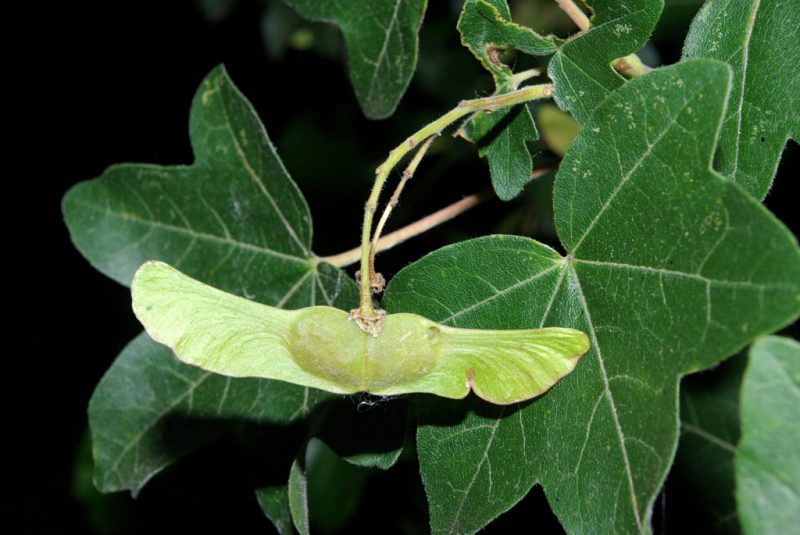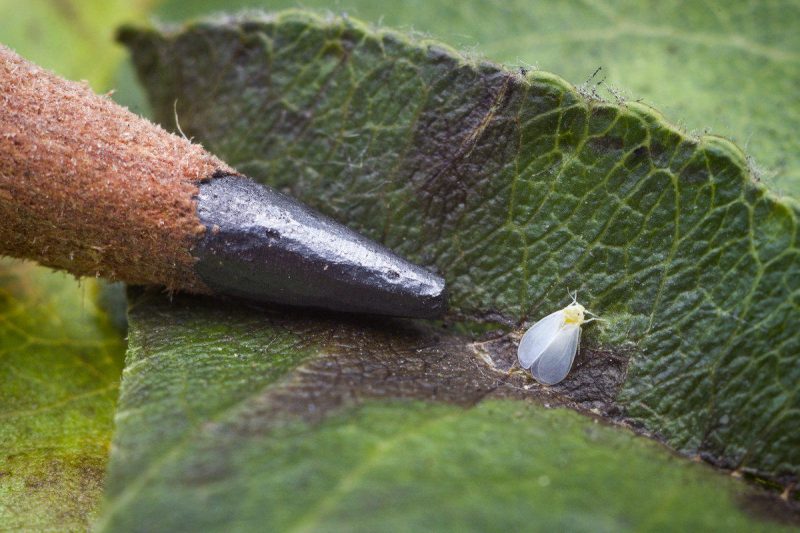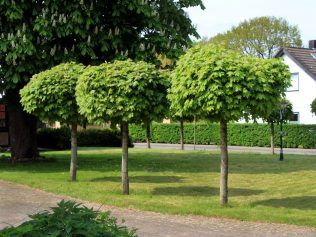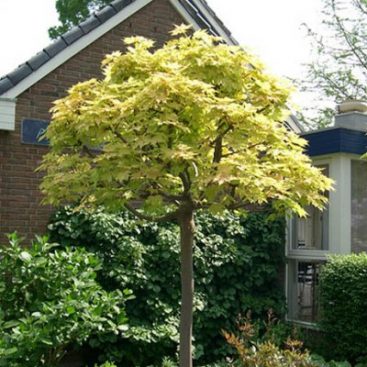Maple trees with decorative foliage and a perfectly round crown are considered to be standards of style. Field maple, it is flat, is no exception and harmoniously fits into any landscape gardening.
Material Content:
Description of varieties and species
The type variety, also known as flat maple, is sometimes represented by shrubs, as well as deciduous trees, whose height in natural conditions can reach 25 m.

- The trunk is dotted with cracks.
- The spherical dense crown is formed by graceful shoots covered with petiolate, oppositely located leaves of a five- or three-lobed shape.
- The foliage is painted green, which eventually changes to yellow-orange tones, playing with bright colors under the rays of the autumn sun.
- When leaf buds open, the formation of corymbose panicles, consisting of yellow-green flowers, is also noted.
- With fruiting occurring in the first half of autumn, lionfish are observed.
Based on the type variety, breeders have deduced many forms.
Popular varieties of field maple:
- Albovariegatum. The variety is distinguished by the color of leaves decorated with white patterns.
- Carnival. Another original representative of the species, whose leaves are framed by a white stripe, when blooming, has a pink or red hue.
- Elsrijk. A decorative tree with miniature leaf plates forming a beautiful crown.
- Green Weeping. Variety with weeping branches and a height of up to 3 m.
- Microphyllum. Low-growing variety not exceeding a height of 3 m.
- Postelense A tree with spectacular golden leaves when blooming, which by the summer acquire a green color.
- Royal Ruby.A shrub plant in which purple leaves bloom, which later become yako-green.
Outdoor field maple planting

The success of growing maple tree in the garden largely depends on the correctness of the planting:
- The choice of place and soil. For field maple, it is worth choosing open areas with good lighting. The soil should be rich in humus and have a loose structure. In the case of scarce soils, it is recommended to pre-enrich the site with macro- and microelements.
- Dates. Planting maple with an open root system occurs before the sap flow begins. If the roots with an earthen lump are in the container, then you can plant a seedling at any time before the onset of cold weather.
- Planting technology - in order for the seedling to quickly take root and develop well, in the selected area, dig a planting hole in accordance with the earthen lump of the seedling. A broken brick is placed at the bottom, which will perform a drainage function. When the seedling is in the pit, the free space is covered with a substrate from the fertile layer of garden soil and peat.
Agrotechnics of cultivation and care
The agricultural technique of cultivating field maple is quite simple and involves simple manipulations.

- Watering. The moisture-loving plant responds well to regular moisturizing at the rate of 1 - 2 buckets per instance. However, in adulthood, the culture easily copes with the dryness of the near-trunk kug, requiring additional watering only during long periods of drought
- Soil treatment. After rainfall or watering, it is recommended that deep cultivation of the near-trunk circle be carried out, followed by mulching, which will prevent evaporation of moisture and the rapid growth of weeds.
- Fertilizing and fertilizers. If soil fertility was restored before planting, or initially had high rates, then the first top dressing begins from the second year of culture growth. Additional food in the spring-summer period is provided by the monthly application of mineral fertilizers. In autumn, it is recommended to feed trees with organic matter in the form of compost or peat.
Cropping and shaping the crown

The spherical crown of field maples differs in an ideal form and does not require forming pruning. However, to maintain the appropriate density and healthy state of greenery, it is recommended that every spring, before the buds begin to swell, a sanitary haircut is carried out and branches that are dried, diseased and thickening the crown are removed.
Tree propagation methods
Field maple is propagated by seeds or cuttings. Varietal representatives should be bred by vaccination. The latter method requires some experience, therefore it is used, as a rule, in nurseries.

Seed method:
- After two months of stratification, the seed is kept in the growth stimulator, after which it is sown in seedling boxes that are covered with glass.
- When seedlings appear, they are dived into separate containers.
- Reinforced seedlings are planted at partial shade, whence seedlings are transferred to a permanent place only after they have reached the age of three.
Cuttings with a vegetative reception:
- In summer, green cuttings with 4 buds are cut and aged in a growth stimulator.
- Prepared planting material is buried in containers with loose substrate.
- Boxes are covered with a film.
- After rooting, the seedlings are planted for growing in open ground.
- After 2 years, young specimens are transplanted to a permanent cultivation site.
Disease and Pest Prevention
Despite the resistance of maple trees to damage by harmful organisms, powdery mildew and coral spotting can sometimes be observed from diseases on these plants, and whiteflies, weevils, and mealybugs from insects can be observed.

To avoid the appearance of signs of vital activity of pathogens or pests, it is necessary to treat the crown with a tank mixture every spring, and with the arrival of autumn, remove fallen leaves in a timely manner, which can serve as a litter for the wintering supply of harmful organisms.
Landscape design
Field maple (Acer campestre) is widely used by landscape designers:
- when making hedges;
- to create group plantings in combination with flowering or deciduous evergreen shrubs;
- in solitary landings on the background of lawns with lush greenery.
So, field maple, not very demanding, but with high decorative qualities, with minimal care will become the central figure of the garden landscape.















